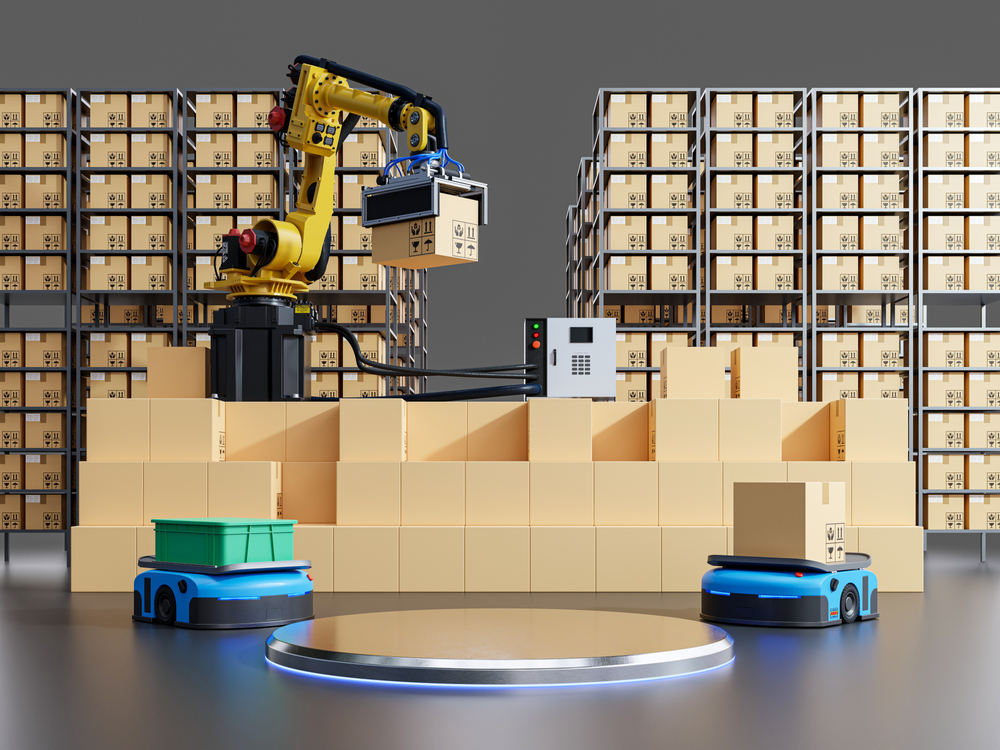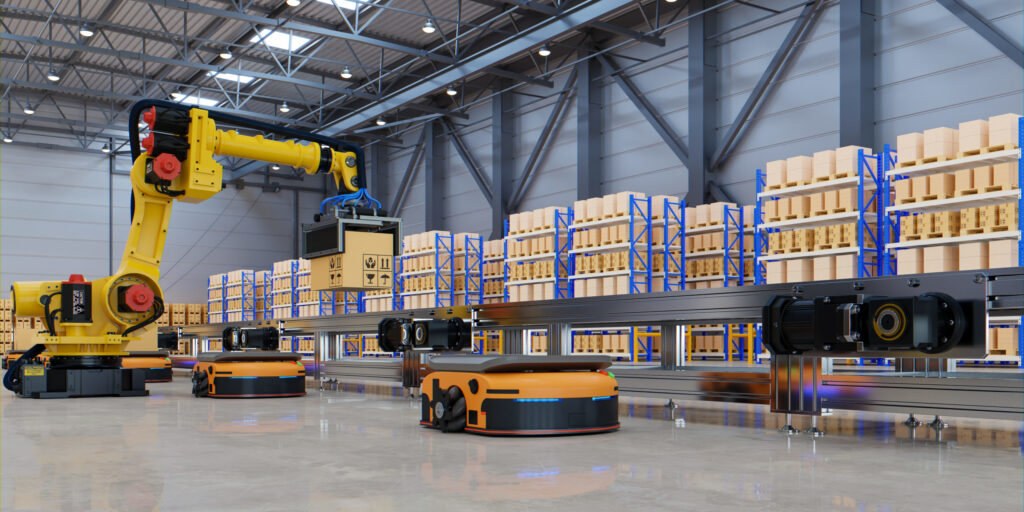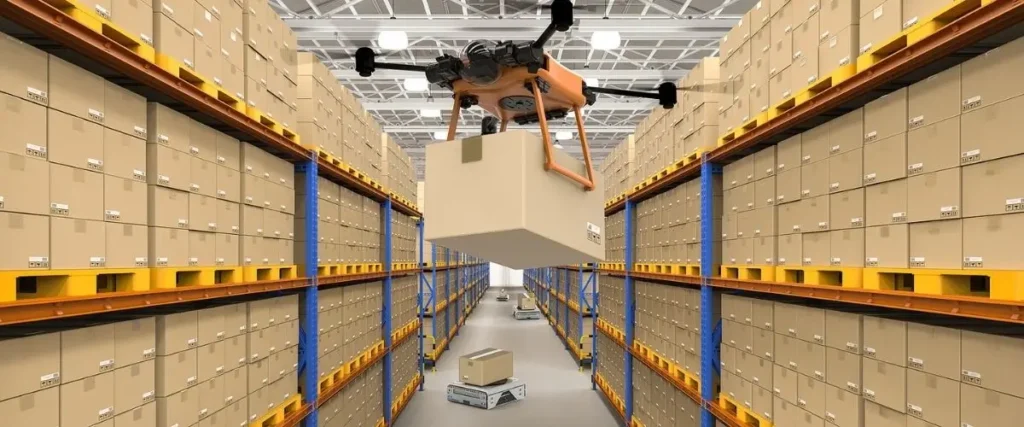The world of logistics and distribution has undergone a remarkable transformation in recent years, thanks to the advent of robotics and automation. Logistics robots have become instrumental in streamlining operations, enhancing efficiency, and revolutionizing the way products move through supply chains. In this comprehensive article, we will explore the pivotal role that robotics plays in optimizing distribution, from warehouse management to last-mile delivery, and how logistics robots are shaping the future of the industry.
Table of Contents
Understanding Logistics Robots

Logistic robots encompass a wide range of automated machines and systems designed to perform tasks related to the movement, handling, and tracking of goods within the logistics and supply chain ecosystem. These robots are equipped with cutting-edge technologies, including artificial intelligence (AI) and machine learning (ML), that enable them to execute complex tasks with precision and efficiency.
The deployment of logistic robots is seen as a response to the growing demands of the industry, such as increased e-commerce orders, the need for rapid and accurate deliveries, and the ongoing pursuit of cost reduction and operational efficiency. By integrating these advanced machines, companies can address these challenges and ensure the seamless flow of goods from manufacturer to consumer.
The Role of Logistics Robots in Warehouse Management
Inventory Management
One of the primary functions of logistics robots in warehouse management is inventory control. Accurate and real-time tracking of inventory levels is crucial to ensure timely replenishment and efficient order fulfillment. Logistic robots equipped with sensors and RFID technology can navigate the warehouse, conduct regular stock counts, and provide up-to-the-minute data on inventory levels. This not only reduces the risk of overstocking or stockouts but also enables better decision-making for restocking and order processing.
Order Picking and Packing

Logistic robots are highly efficient at order picking and packing, a task that traditionally requires substantial human labor. Advanced robotic systems employ AI and ML algorithms to optimize the order-picking process. These robots can identify the most efficient routes through the warehouse, minimize travel time, and ensure that the correct items are picked and packed accurately. This results in faster order processing, reduced errors, and improved customer satisfaction.
Load Transportation
The movement of heavy loads within a warehouse is strenuous and can pose safety risks for human workers. Logistic robots, however, are designed to handle these tasks with ease. Autonomous mobile robots (AMRs) equipped with load-carrying capabilities can transport pallets, containers, and goods from one location to another, reducing the physical strain on workers and allowing them to focus on more complex tasks. This not only enhances warehouse safety but also improves productivity.
Autonomous Shelf Replenishment
Maintaining organized and accessible shelves is vital for efficient warehouse management. Logistic robots are programmed to autonomously replenish shelves with products as they are depleted. They can identify empty spaces on shelves and refill them with the appropriate items. This real-time replenishment ensures that products are readily available for order fulfillment and minimizes delays caused by manual restocking processes.
The Impact of Logistics Robots on Distribution Centers
Improved Speed and Efficiency
Distribution centers are the heart of supply chain operations, and logistic robots play a pivotal role in ensuring the efficient movement of goods. Robots are capable of working 24/7 without fatigue, resulting in a significant increase in the speed and efficiency of distribution center operations. They can handle tasks such as unloading trucks, sorting products, and preparing orders with unparalleled speed and precision.
Space Optimization
Logistic robots can optimize the use of space within distribution centers. They are designed to navigate in confined spaces and can efficiently stack and retrieve products from shelves. This ability to make the most of available storage space is invaluable in densely packed distribution centers, reducing the need for expansion and leading to cost savings.
Streamlined Cross-Docking
Cross-docking is a logistics strategy where products are transferred directly from inbound to outbound trucks with minimal storage time. Logistic robots can facilitate this process by quickly unloading incoming shipments and routing products to the appropriate outbound trucks. This accelerates the distribution process, reduces storage costs, and minimizes the risk of product damage.
Enhanced Traceability
Traceability is a critical aspect of distribution, especially when dealing with perishable or high-value goods. Logistic robots equipped with tracking technology and sensors can provide end-to-end visibility throughout the distribution process. They can record information about the condition and location of products, ensuring that any issues or discrepancies can be quickly identified and addressed.
The Role of Logistics Robots in Last-Mile Delivery

Autonomous Delivery Vehicles
Logistics robots extend their influence to the last mile of delivery through autonomous delivery vehicles. These vehicles are equipped with advanced AI systems that allow them to navigate urban environments, avoid obstacles, and make autonomous deliveries. The use of autonomous vehicles in the last mile not only reduces delivery costs but also contributes to the reduction of greenhouse gas emissions by optimizing delivery routes and schedules.
Parcel Sorting
Parcel sorting centers play a crucial role in the last-mile delivery process. Logistic robots can efficiently sort parcels based on their size, weight, and destination. The automation of this task ensures that parcels are directed to the correct delivery routes, minimizing errors and delays. Customers receive their orders faster, leading to higher satisfaction levels.
Drone Deliveries
The integration of logistic robots and drones has brought about a new era in last-mile delivery. Drones are capable of delivering packages to remote or hard-to-reach areas quickly. They are particularly useful in emergencies or for delivering medical supplies. The combination of logistics robots and drones expands the reach of last-mile delivery services and improves their responsiveness.
Challenges and Considerations in Implementing Logistics Robots
While logistic robots offer numerous advantages, their implementation is not without challenges and considerations. Companies need to address the following aspects to ensure the successful integration of logistics robots into their operations:
- Initial Investment: Acquiring and deploying logistics robots can involve a significant upfront investment. Companies must carefully assess the costs and benefits to justify this investment.
- Integration with Existing Systems: Compatibility with existing warehouse management systems (WMS) and enterprise resource planning (ERP) systems is crucial for a seamless integration of logistics robots. Ensuring that these systems can communicate effectively with the robots is essential.
- Workforce Training: Training employees to work alongside logistics robots is vital. Workers should be prepared to collaborate with robots and understand their roles in the evolving logistics landscape.
- Maintenance and Support: Logistics robots require regular maintenance to ensure their optimal performance. Companies need to have maintenance and support plans in place to minimize downtime and disruptions.
- Data Security: The use of AI and ML in logistics robots generates substantial data. Protecting this data from security breaches and ensuring compliance with data protection regulations is a significant concern.
- Ethical and Regulatory Considerations: Companies must navigate ethical issues surrounding the use of automation, such as the potential impact on human jobs and safety. Additionally, they should stay informed about evolving regulations related to robotics and automation in the logistics sector.
The Future of Logistics Robots
The future of logistic robots is promising, with continuous advancements in technology and increased adoption across industries. Here are some key trends and developments that will shape the future of logistics robots:
- Human-Robot Collaboration: Logistic robots will increasingly collaborate with human workers, working side by side to enhance productivity. Humans will focus on tasks that require creativity, problem-solving, and decision-making, while robots handle repetitive and physically demanding work.
- Artificial Intelligence and Machine Learning: Logistic robots will become more intelligent, leveraging AI and ML to improve their ability to navigate complex environments, adapt to changing circumstances, and make real-time decisions.
- Enhanced Mobility: Future logistic robots will have improved mobility, enabling them to navigate a wide range of terrains, including outdoor environments. This will expand their applicability in various logistics and delivery scenarios.
- Customization and Scalability: Logistic robots will be more customizable and scalable, allowing companies to adapt and expand their robotic fleets to meet specific operational needs.
- Sustainability: The integration of logistics robots in delivery and distribution will contribute to sustainability efforts by optimizing delivery routes and reducing emissions. This aligns with the growing emphasis on eco-friendly logistics practices.
Conclusion
Logistics robots are a transformative force in the world of distribution and supply chain management. Their role in warehouse management, distribution centers, and last-mile delivery is reshaping the industry by improving efficiency, reducing costs, and enhancing customer satisfaction. As logistic robots continue to evolve and integrate advanced technologies, they will play a pivotal role in the future of logistics and distribution, contributing to a more efficient, sustainable, and connected global supply chain network.
The optimization of distribution with logistic robots is not just a choice but a necessity for companies looking to stay competitive and meet the ever-increasing demands of the modern consumer. The ability to adapt and embrace these advanced technologies will determine the success of businesses in the logistics industry and beyond. Logistic robots are more than just machines; they are the architects of a smarter, more efficient, and agile supply chain ecosystem.
